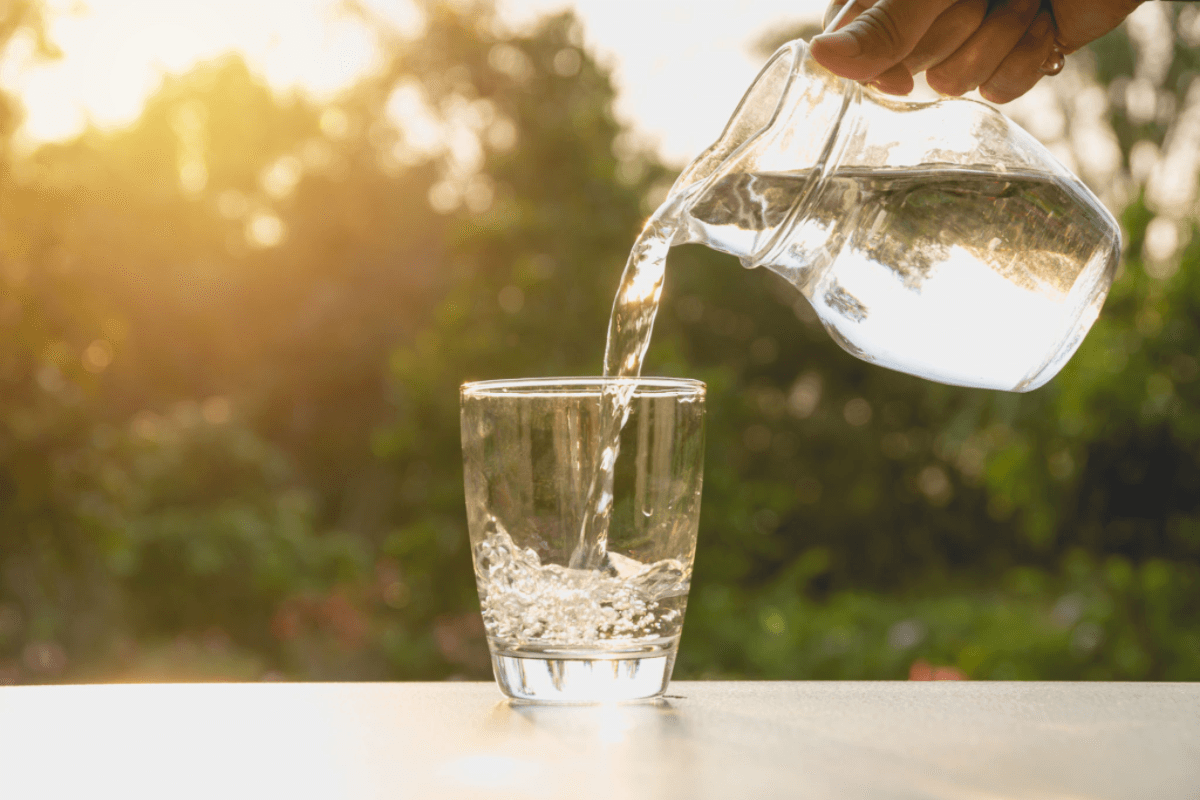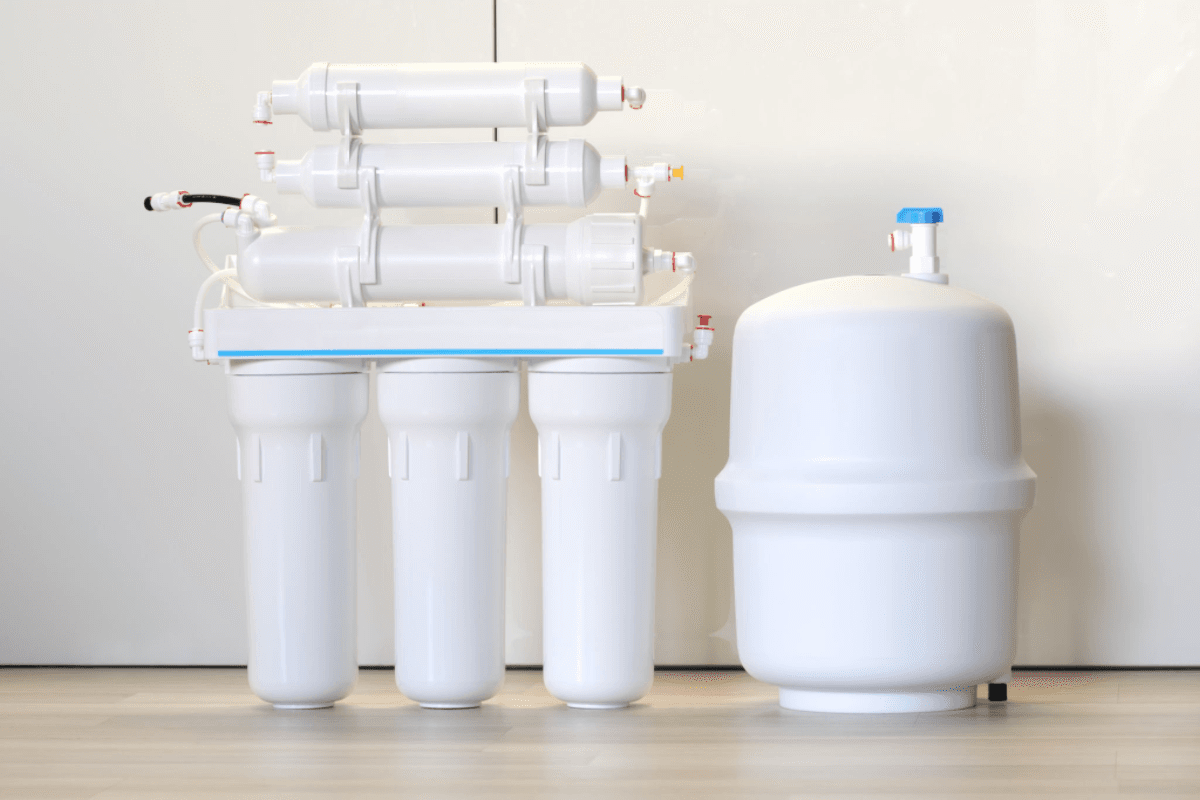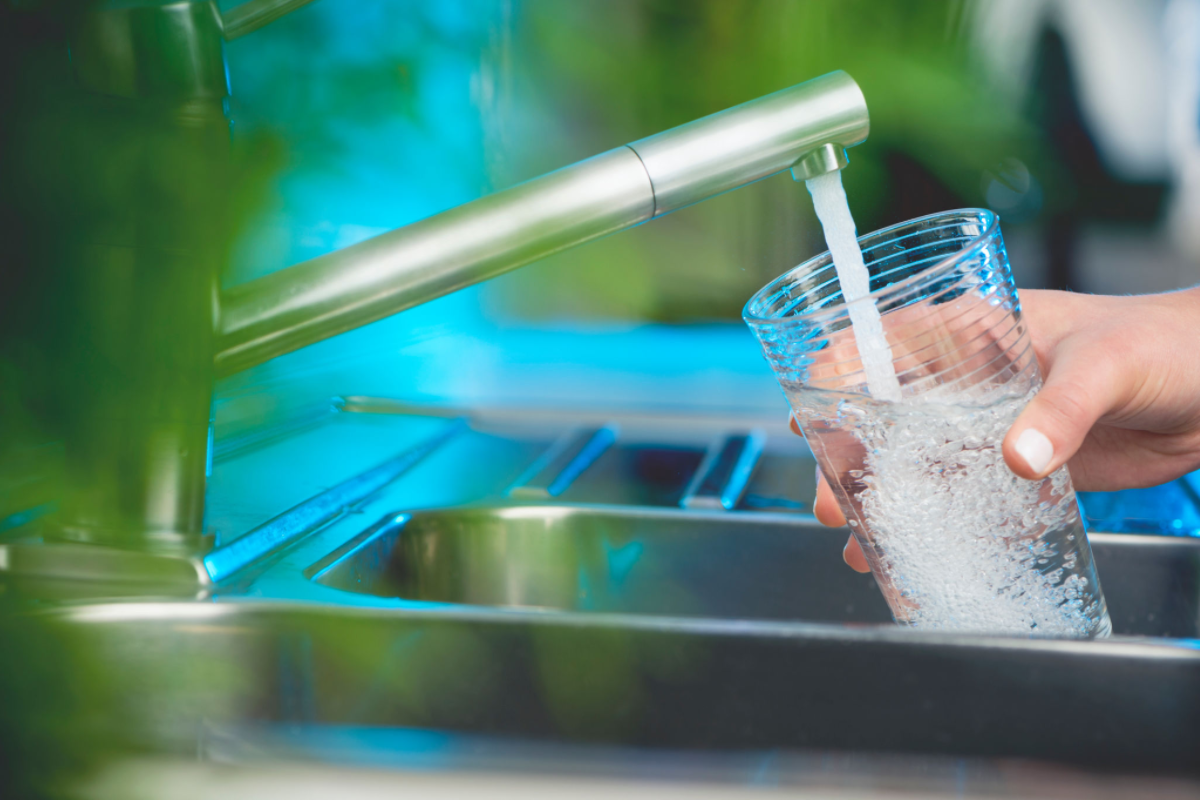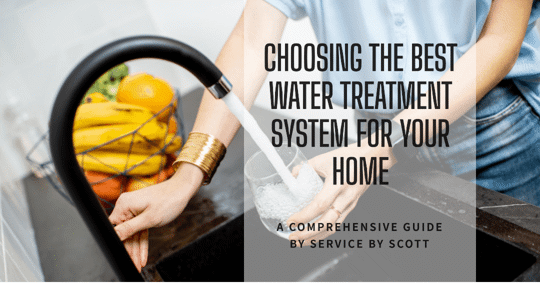Clean, safe, and reliable water is a fundamental necessity for every household. It’s not just a matter of convenience; it’s a matter of health and well-being. In Tyler County and the surrounding areas, where water quality can vary, making the right choice when it comes to water treatment is crucial. That’s where Service by Scott, a trusted name in the plumbing and maintenance industry, steps in to ensure that your family has access to the best water possible.
For over three decades, Service by Scott has been a family-owned and operated business serving Woodville, Texas, and its neighboring communities. With a commitment to excellence and a passion for ensuring that homes and businesses have access to clean and safe water, they have become the go-to experts in the region. Whether you’re dealing with issues like hard water, contaminants, or the need for water softening, Service by Scott has the experience and expertise to guide you in making the right choice for your unique needs. In this guide, we will explore the vital steps in selecting the right water treatment system for your home or business, with insights from the experts at Service by Scott. Let’s embark on a journey to ensure your water is not just good enough but of the highest quality.
Assessing Your Water Quality
Before you embark on the journey of selecting the right water treatment system, it’s essential to understand the current state of your water quality. Not all water sources are created equal, and the contaminants present in your water can vary widely depending on your location. Properly assessing your water quality is the foundational step in making an informed decision about the type of treatment system you need.
Understanding Water Testing
Water testing is the starting point in the process of assessing your water quality. This crucial step involves the analysis of your water sample to identify any impurities, contaminants, or irregularities. While some homeowners may opt for DIY water testing kits available at local stores, it’s often recommended to seek professional testing, especially if your water source is known to have specific issues.
Professional water testing services provide a more comprehensive analysis, often including tests for various contaminants such as bacteria, lead, chlorine, hardness, and more. They can pinpoint the exact composition of your water and provide valuable insights into its quality. This comprehensive data is crucial in determining the most suitable water treatment system for your specific needs.
Common Water Contaminants
Water quality issues can stem from a wide range of contaminants, each requiring different treatment approaches. Common water contaminants include:
- Hard Water Minerals: Hard water contains high levels of minerals like calcium and magnesium, which can lead to scale buildup in plumbing and appliances.
- Bacteria and Microorganisms: Contaminants such as E. coli and coliform bacteria pose serious health risks if present in drinking water.
- Chemical Pollutants: Pesticides, heavy metals, and industrial chemicals can find their way into your water supply, potentially causing health concerns.
- Sediment and Debris: Particulate matter, sand, and debris can make water appear cloudy and affect its taste and odor.
- Chlorine and Chloramines: Added to municipal water supplies for disinfection, these chemicals can affect the taste and odor of your water.
Understanding which contaminants are present in your water is essential for choosing the right treatment method. Different water treatment systems target specific issues, so accurate identification is key to effective water purification.
DIY vs. Professional Testing
While DIY water testing kits are readily available and cost-effective, they may provide only a basic overview of your water quality. They are a good starting point if you’re curious about your water’s general condition. However, for a more comprehensive and accurate analysis, especially if you suspect specific issues, professional testing is highly recommended.
Professional testing typically involves sending samples to a certified laboratory, where trained experts conduct a battery of tests to assess water quality comprehensively. The results are often more detailed and reliable, helping you make informed decisions about water treatment.
In the next section, we’ll delve into the various types of water treatment systems available, but first, it’s crucial to have a clear understanding of your water quality to address the specific issues you may be facing. Whether you opt for DIY testing or the expertise of professionals, assessing your water quality sets the stage for a healthier, more enjoyable water supply.

Exploring Water Treatment Systems
In your journey to discover the right water treatment system, understanding the options available is paramount. Service by Scott is here to guide you through this exploration, highlighting the diverse range of water treatment solutions.
Point-of-Entry (POE) Systems
Whole-House Filtration
Whole-house filtration systems are the backbone of comprehensive water treatment. These systems are strategically placed at the point of entry to your home, ensuring that every drop of water is treated before reaching your faucets and appliances. Service by Scott recommends these systems to address a broad spectrum of water quality concerns effectively.
Whole-house filtration typically involves multiple stages, each equipped to combat specific contaminants. Sediment filters, carbon filters, and water softeners are commonly integrated into these systems. With the ability to treat large volumes of water, they enhance water quality for every aspect of daily life, from drinking and cooking to showering and laundry.
Water Softeners
Hard water, laden with minerals like calcium and magnesium, can wreak havoc on your plumbing and appliances. Water softeners are the champions of mitigating this issue. Service by Scott endorses the use of water softeners to combat hard water, as they employ ion exchange to replace these troublesome minerals with sodium ions, resulting in softer and more manageable water.
Point-of-Use (POU) Systems
Under-Sink Filters
Under-sink filters are compact yet powerful solutions for enhancing water quality where it matters most—in your kitchen. These systems are installed directly beneath your sink and focus on providing purified water for drinking and cooking. Service by Scott recognizes the convenience and efficiency of under-sink filters, especially when targeting specific contaminants like chlorine, lead, and sediment.
Reverse Osmosis Systems
When uncompromising purity is the goal, reverse osmosis (RO) systems shine. These point-of-use systems utilize a semi-permeable membrane to remove a wide array of impurities, including bacteria, viruses, heavy metals, and dissolved solids. RO systems, recommended by Service by Scott, are hailed for delivering exceptionally clean and safe drinking water directly from a dedicated faucet.
With Service by Scott as your guide, you can explore the world of water treatment systems, understanding their strengths and capabilities. Each system is designed to address unique water quality challenges, ensuring that your choice aligns perfectly with your specific needs.
Determining Your Water Treatment Needs
Now that you’re acquainted with the types of water treatment systems available, it’s time to take a closer look at how to determine your specific water treatment needs. Choosing the right system involves considering several factors unique to your situation, ensuring that your investment addresses the exact issues affecting your water supply.
Identifying Specific Contaminants
To pinpoint your water treatment needs accurately, you must identify the specific contaminants or water quality issues present in your supply. Your earlier water quality assessment will provide crucial insights into this. Take note of any contaminants detected during testing, such as bacteria, lead, chlorine, sediment, or hardness minerals.
Different treatment systems excel at removing particular contaminants. For instance, if your tests revealed high levels of hardness minerals, a water softener or a whole-house filtration system may be suitable. On the other hand, if your water contains bacteria or microorganisms, a UV sterilization system may be necessary to ensure safe drinking water.
Water Usage Patterns
Consider your household or business’s water usage patterns when determining your treatment needs. If you have a larger family or a high water demand, a whole-house filtration system may be more practical. Conversely, if your primary concern is drinking water quality, a point-of-use system like a reverse osmosis filter under your kitchen sink may suffice.
Understanding your water usage patterns helps you size your treatment system correctly, ensuring it can handle your daily water needs effectively.
Budget Considerations
Budget plays a significant role in your decision-making process. Water treatment systems come in various price ranges, from cost-effective point-of-use filters to more substantial whole-house systems. Consider both the initial purchase cost and ongoing maintenance expenses.
While it’s tempting to choose the most affordable option, it’s essential to strike a balance between cost and performance. Investing in a system that adequately addresses your water quality issues can save you money in the long run by preventing costly repairs and extending the lifespan of your appliances.
By carefully assessing your water quality, identifying specific contaminants, considering your water usage patterns, and budgeting accordingly, you can determine your precise water treatment needs. Armed with this knowledge, you’ll be better equipped to select the right treatment system to ensure clean, safe, and reliable water for your home or business. In the next section, we’ll delve into the critical topic of choosing the right filtration technology for your unique requirements.

Choosing the Right Filtration Technology
With a clear understanding of your water quality and specific treatment needs, you’re now ready to explore the diverse world of filtration technologies. Each filtration method comes with its strengths and weaknesses, making it crucial to select the technology best suited to your unique requirements.
Carbon Filtration
Carbon filtration is a highly effective and versatile method commonly used in both point-of-entry and point-of-use water treatment systems. Activated carbon, the primary filtering agent, works by adsorbing (attracting and binding to its surface) a wide range of impurities, including chlorine, volatile organic compounds (VOCs), and bad tastes and odors. This process enhances the overall taste and quality of your water.
Carbon filters come in various forms, including granular activated carbon (GAC) filters and carbon block filters. GAC filters are excellent for whole-house systems, while carbon block filters are often used in under-sink units. Carbon filtration is an excellent choice for improving the taste and odor of your water, but it may not be sufficient for addressing certain contaminants like heavy metals or bacteria.
UV Sterilization
Ultraviolet (UV) sterilization is a powerful disinfection method that uses ultraviolet light to destroy bacteria, viruses, and other microorganisms present in your water. This technology is particularly effective at ensuring the microbiological safety of your drinking water.
UV sterilization systems consist of a UV lamp that emits UV-C light, which disrupts the DNA of microorganisms, rendering them unable to reproduce or cause illness. One of the significant advantages of UV sterilization is that it doesn’t introduce any chemicals into your water and doesn’t alter its taste or odor. However, it’s essential to note that UV systems do not remove non-living contaminants like heavy metals, sediment, or chlorine. They are typically used in conjunction with other filtration methods for comprehensive water treatment.
Ion Exchange
Ion exchange is a process used primarily in water softeners to remove hardness minerals like calcium and magnesium ions from your water. These systems use resin beads charged with sodium ions to attract and replace the calcium and magnesium ions, effectively “softening” the water.
Water softeners are invaluable in preventing scale buildup in pipes and appliances, improving the efficiency of water heaters, and prolonging the life of your plumbing infrastructure. However, ion exchange does not address other types of contaminants, so it’s typically used alongside other filtration methods to provide comprehensive water treatment.
Reverse Osmosis
Reverse osmosis (RO) is a highly effective water purification process that uses a semi-permeable membrane to remove a wide range of contaminants, including dissolved solids, heavy metals, bacteria, viruses, and more. RO systems produce exceptionally pure drinking water by forcing water through the membrane, leaving impurities behind.
RO systems are a popular choice for households seeking the highest level of water quality and purity. They provide clean, safe, and great-tasting drinking water directly from a dedicated faucet. However, it’s important to note that RO systems can be less water-efficient, as they generate some wastewater during the purification process. Additionally, they require periodic maintenance, including filter replacements and membrane cleaning.
Selecting the right filtration technology is a critical step in ensuring that your water treatment system effectively addresses your specific needs. Consider your water quality assessment, the contaminants present, and your desired water quality goals to make an informed choice. In the next section, we’ll discuss the importance of sizing your water treatment system correctly to ensure optimal performance.
Sizing Your Water Treatment System
Once you’ve identified the type of water treatment system that best suits your needs and chosen the appropriate filtration technology, the next crucial step is sizing the system correctly. Proper sizing ensures that your water treatment system can effectively handle the demands of your household or business while delivering optimal performance.
Matching System Capacity to Demand
The capacity of your water treatment system is a key consideration. It must match or exceed your daily water usage to ensure a consistent supply of treated water. When selecting a system, manufacturers typically provide information on its flow rate or capacity. This measurement is usually expressed in gallons per minute (GPM) for whole-house systems or gallons per day (GPD) for point-of-use systems.
To determine your water treatment system’s capacity requirements, consider factors such as the number of occupants in your home, the daily water consumption, and peak usage times. For instance, a family of four with a high water demand may require a whole-house filtration system with a higher GPM capacity to ensure a sufficient flow of treated water throughout the day.
Considering Peak Usage
Peak water usage periods are when multiple water fixtures and appliances are in use simultaneously, such as during morning showers or when doing laundry and running the dishwasher. Your water treatment system should be able to handle these peak demands without a significant drop in water pressure or flow rate.
For whole-house systems, it’s important to calculate your peak usage and select a system that can meet or exceed these demands. Oversizing the system slightly can provide a buffer during peak times, ensuring consistent water quality and pressure.
Additionally, point-of-use systems like under-sink filters or reverse osmosis units should be chosen based on their ability to deliver treated water at a sufficient rate during peak usage.
By properly sizing your water treatment system, you can avoid potential issues such as reduced water flow, pressure drops, or inadequate treatment. Ensuring that your system matches your specific demands guarantees a reliable supply of clean, treated water for your daily needs.

Installation and Maintenance
Selecting the right water treatment system and ensuring it’s properly installed and maintained are crucial steps in guaranteeing the continued delivery of clean, safe water to your home or business. Let’s delve into the importance of installation and the key aspects of maintenance for your water treatment system.
Professional Installation vs. DIY
When it comes to the installation of your water treatment system, the choices you make can significantly impact its performance and lifespan. Service by Scott recognizes the importance of this decision and offers valuable insights to help you make an informed choice.
For smaller, point-of-use systems like under-sink filters, DIY installation may be a suitable option. These systems are relatively straightforward to install and typically come with clear instructions. However, when you’re dealing with more extensive or complex systems such as whole-house filtration or advanced reverse osmosis units, opting for professional installation is often the wisest course of action.
Service by Scott’s team of experienced professionals possesses the expertise needed to ensure that your system integrates seamlessly with your plumbing infrastructure. Their in-depth knowledge minimizes the risk of installation errors that could lead to leaks, pressure imbalances, or reduced system effectiveness. Additionally, their access to specialized tools allows them to handle any unforeseen challenges that may arise during the installation process.
While DIY installations may appear cost-effective initially, any mistakes made during the process can result in costly repairs and decreased system efficiency down the road. Service by Scott advises homeowners to assess the complexity of their chosen system and their plumbing skills carefully. Choosing professional installation not only offers peace of mind but also guarantees long-term reliability for your water treatment system.
Routine Maintenance Tips
To keep your water treatment system operating at its best, regular maintenance is essential. Here are some key maintenance tips:
- Filter Replacement: If your system uses filters, be sure to replace them at the recommended intervals. Overused or clogged filters can result in reduced water flow and compromised filtration efficiency.
- Cleaning: Periodically clean the components of your system, such as the UV lamp in a UV sterilization system or the membrane in a reverse osmosis unit. Follow manufacturer guidelines for proper cleaning procedures.
- Check for Leaks: Routinely inspect your system for any signs of leaks or drips. Address any issues promptly to prevent water damage.
- Monitor Pressure: Keep an eye on water pressure. A significant pressure drop could indicate a problem with your system, such as clogged filters or a malfunctioning component.
- Schedule Professional Maintenance: Consider scheduling annual or bi-annual professional maintenance checks, especially for whole-house systems. Professionals, such as Service by Scott can identify and address issues that may go unnoticed during routine inspections.
- Water Testing: Periodically retest your water to ensure that your treatment system continues to meet your water quality goals. Changes in water quality may require adjustments to your system or the replacement of certain components.
By following these maintenance guidelines and addressing any issues promptly, you can ensure the longevity and effectiveness of your water treatment system. Regular maintenance not only safeguards your investment but also guarantees the continued delivery of clean and safe water for your household or business.
Conclusion
In the quest for clean, safe, and reliable water, the journey begins with making informed choices about your water treatment system. You’ve embarked on this journey by assessing your water quality, determining your specific treatment needs, choosing the right filtration technology, and sizing your system to match your demands. These crucial steps set the stage for a water supply that meets the highest standards of quality and safety.
However, your journey doesn’t end here—it continues with proper installation and diligent maintenance. The professional installation of your system ensures its seamless integration into your plumbing infrastructure, while routine maintenance guarantees its long-term effectiveness. These efforts contribute to the ongoing provision of high-quality water for your household or business.
As you navigate this process, remember that you’re not alone. Service by Scott, with over 30 years of dedicated service to Woodville, Texas, and the surrounding communities, stands ready to assist you. With their expertise, dedication, and commitment to excellence, Service by Scott is your trusted partner in achieving water quality that exceeds your expectations.
Contact Service by Scott today, and let their experienced team guide you toward the perfect water treatment solution for your unique needs. Experience the difference of clean, safe, and reliable water—reach out to Service by Scott and take the first step towards a healthier and happier water supply.
FAQs
How can I test my water quality at home?
You can use DIY water testing kits available at hardware stores or online retailers for basic testing. For a more comprehensive analysis, consider professional water testing services, which provide in-depth insights into your water quality.
What are the signs of poor water quality?
Signs of poor water quality may include unpleasant odors or tastes, cloudy or discolored water, limescale buildup on fixtures, and health issues such as gastrointestinal problems. A water quality test can help identify specific issues.
Is a water softener necessary for my home?
A water softener is beneficial if you have hard water, characterized by high levels of minerals like calcium and magnesium. It helps prevent scale buildup in pipes and appliances, prolonging their lifespan and improving the efficiency of water heaters.
What maintenance is required for water treatment systems?
Regular maintenance is essential. It includes tasks such as replacing filters at recommended intervals, cleaning system components as needed, checking for leaks, monitoring water pressure, and scheduling professional maintenance checks to ensure optimal performance.
How much does a typical water treatment system cost?
The cost of a water treatment system varies widely based on factors like system type, capacity, and complexity. Point-of-use systems can be more budget-friendly, while whole-house systems with advanced features may come at a higher price point. It’s essential to balance cost with system effectiveness and long-term savings on repairs and water usage.

